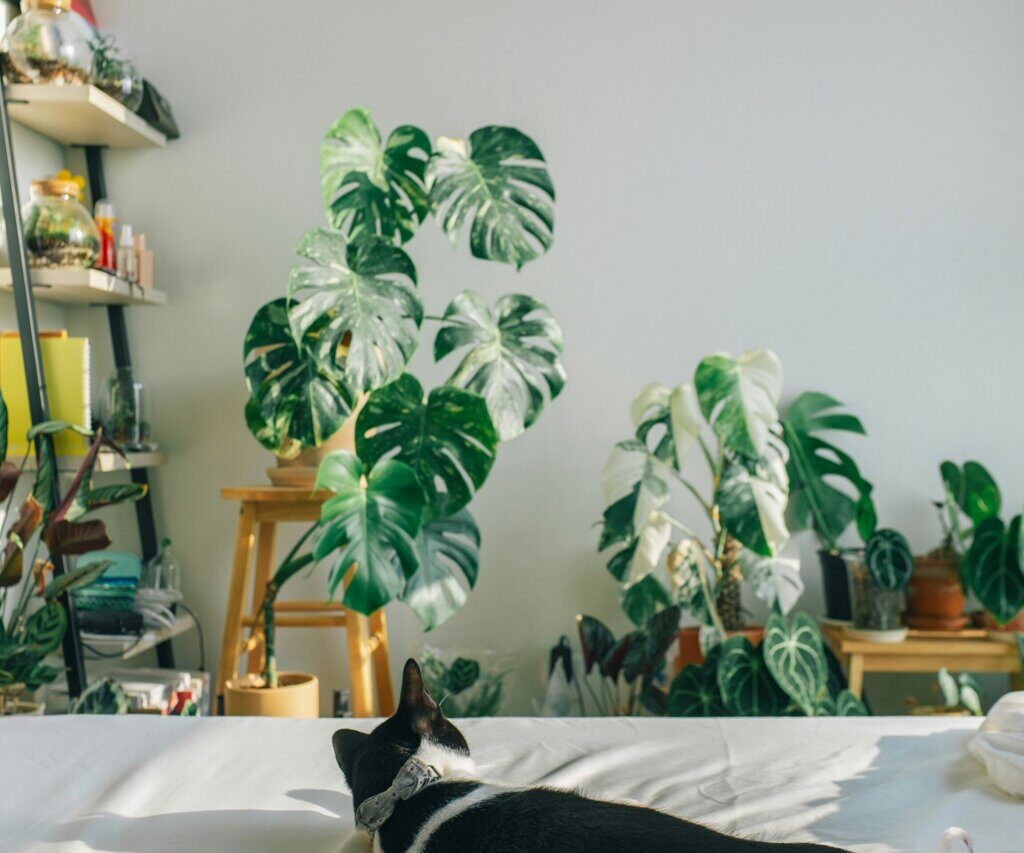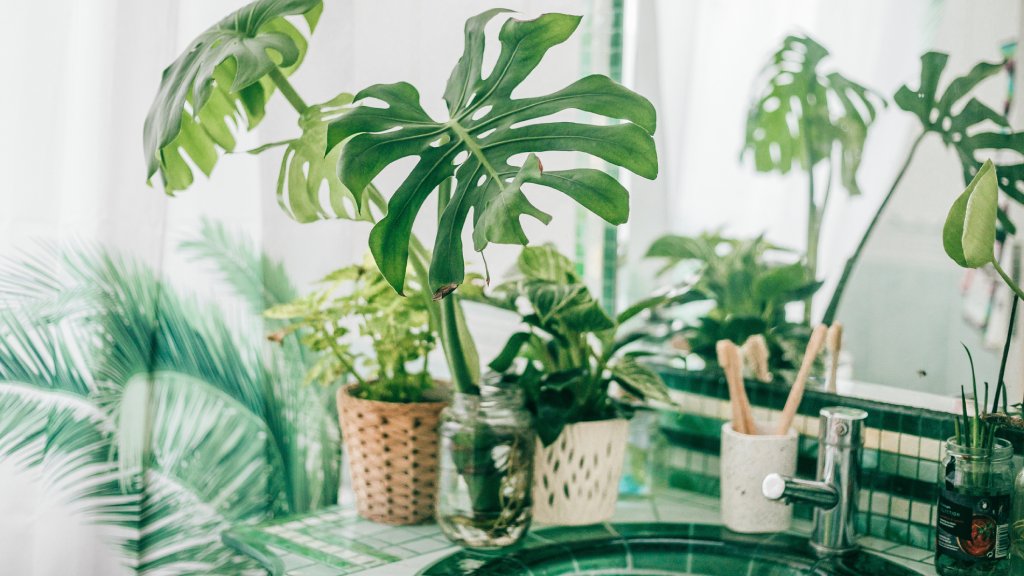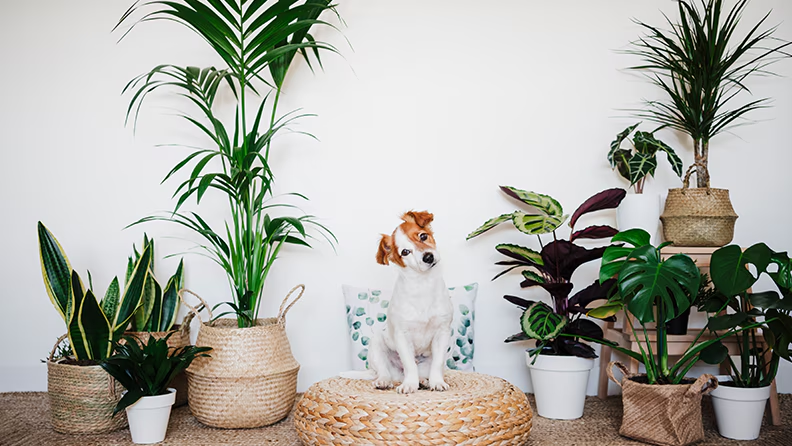Indoor plants bring beauty, tranquility, and fresh air into our homes, but for families with pets, choosing the right plants is essential. Many popular houseplants, like pothos or philodendrons, are toxic to cats and dogs if chewed or ingested. This makes selecting safe, non-toxic plants a priority for households that want both greenery and peace of mind. Luckily, there are many pet-friendly indoor plants that thrive indoors while keeping furry family members safe.
In this guide, we’ll explore five safe and beautiful indoor plants, their care needs, and why they’re a perfect fit for pet-friendly homes.
1. Spider Plant (Chlorophytum comosum)

The spider plant is one of the most popular indoor plants, especially for families with pets. Its arching green-and-white striped leaves add elegance, while its resilience makes it ideal for beginner gardeners.
Why It’s Pet-Friendly
Spider plants are non-toxic to both cats and dogs. Although pets may sometimes play with or chew the dangling leaves, ingestion won’t harm them.
Care Guide
- Light: Bright, indirect sunlight is best, though spider plants can tolerate low light.
- Watering: Water once the top inch of soil feels dry. Avoid waterlogging, as it can cause root rot.
- Temperature & Humidity: Prefers moderate temperatures (60–75°F / 16–24°C). Tolerates average household humidity but benefits from occasional misting.
- Propagation: Easy to propagate from the small plantlets (“spiderettes”) that grow from mature plants.
Family-Friendly Benefits
The spider plant is highly adaptable, easy to maintain, and improves indoor air quality by filtering toxins like formaldehyde. Plus, its playful cascading leaves make it visually appealing for children and pets alike.
2. Areca Palm (Dypsis lutescens)

If you’re looking for a lush, tropical vibe indoors, the Areca palm is a perfect choice. With its feathery fronds and upright growth habit, it can turn any living space into a green sanctuary.
Why It’s Pet-Friendly
Unlike some palm varieties (like the toxic sago palm), the Areca palm is completely safe for pets. Cats and dogs can brush past or even nibble on the fronds without risk.
Care Guide
- Light: Prefers bright, indirect light. Too much direct sun can scorch the leaves.
- Watering: Keep the soil lightly moist during the growing season (spring and summer). Water less often in winter.
- Temperature & Humidity: Thrives in warm, humid conditions (65–80°F / 18–27°C). Occasional misting helps keep fronds fresh.
- Growth: Can reach 6–7 feet indoors, making it an excellent statement plant for corners or living rooms.
Family-Friendly Benefits
The Areca palm is not only safe but also a natural air humidifier, releasing moisture into the air and improving indoor air quality—perfect for families prone to dry skin or allergies.
3. Boston Fern (Nephrolepis exaltata)

The Boston fern is a classic indoor plant with lush, feathery fronds that bring softness and greenery into any room. Its cascading nature makes it beautiful in hanging baskets or on plant stands.
Why It’s Pet-Friendly
Boston ferns are non-toxic to cats and dogs, making them a safe option for families.
Care Guide
- Light: Prefers bright, indirect light. Avoid harsh sunlight, which can dry out fronds.
- Watering: Keep the soil consistently moist but not soggy. Ferns dislike drying out completely.
- Humidity: Requires high humidity. Place a humidifier nearby or mist daily for best results.
- Temperature: Ideal range is 60–75°F (16–24°C). Avoid placing it near heaters or vents.
Family-Friendly Benefits
Boston ferns are known for their air-purifying properties, removing pollutants like xylene and formaldehyde from indoor air. They also create a calming, cozy atmosphere—perfect for family spaces.
4. Calathea (Prayer Plant Family)

Calatheas, also known as prayer plants, are beloved for their striking foliage, which features bold stripes, patterns, and shades of green, purple, or pink. At night, their leaves fold upward as though in prayer—a fun and fascinating feature for children to observe.
Why It’s Pet-Friendly
Calathea species are safe for pets, making them a colorful addition to homes with cats and dogs.
Care Guide
- Light: Thrives in low to medium, indirect light. Direct sunlight can bleach or scorch leaves.
- Watering: Keep soil evenly moist but avoid sogginess. Use filtered or rainwater if possible, as calatheas are sensitive to chemicals in tap water.
- Humidity & Temperature: Loves warm, humid conditions (65–80°F / 18–27°C). Place in bathrooms or kitchens for natural humidity.
- Maintenance: Wipe leaves occasionally to remove dust and enhance their bold patterns.
Family-Friendly Benefits
Calatheas add a splash of artistic beauty to homes. Their unique, moving leaves make them interactive and educational for children, while their non-toxicity keeps pets safe.
5. Parlor Palm (Chamaedorea elegans)

The parlor palm is another safe, elegant palm that thrives indoors. Its delicate fronds and slow growth make it perfect for tabletops, desks, or small living spaces.
Why It’s Pet-Friendly
Like the Areca palm, the parlor palm is non-toxic to cats and dogs, making it one of the best choices for pet-friendly families.
Care Guide
- Light: Adapts well to low to medium light. Perfect for rooms without direct sunlight.
- Watering: Water moderately, allowing the soil to dry slightly between waterings.
- Temperature & Humidity: Prefers average household temperatures (65–75°F / 18–24°C) and moderate humidity.
- Growth: Slow-growing and compact, usually reaching 2–4 feet indoors.
Family-Friendly Benefits
Parlor palms are low-maintenance and long-lived, making them an excellent choice for busy households. Their elegant look adds a touch of greenery without requiring much care.
Tips for Keeping Pets and Plants Happy Together
Even when you choose non-toxic plants, it’s wise to take precautions so both plants and pets thrive together:
- Provide Distractions: Cats often chew plants out of boredom. Offering cat grass or toys helps redirect this behavior.
- Elevate Plants: Use plant stands, shelves, or hanging baskets to keep plants out of reach of playful paws.
- Training: Gently train pets to stay away from plant areas with positive reinforcement techniques.
- Regular Checks: Inspect plants for chew marks or damage and adjust placement if needed.
Conclusion
Bringing greenery indoors shouldn’t come at the cost of your pets’ safety. The five plants we’ve explored—Spider Plant, Areca Palm, Boston Fern, Calathea, and Parlor Palm—are not only safe but also stunning and family-friendly. They add natural beauty, improve air quality, and create a more inviting home while keeping your pets safe and happy.
By choosing pet-friendly indoor plants, families can enjoy the best of both worlds: a thriving green environment and the peace of mind that comes with knowing their furry companions are out of harm’s way.





